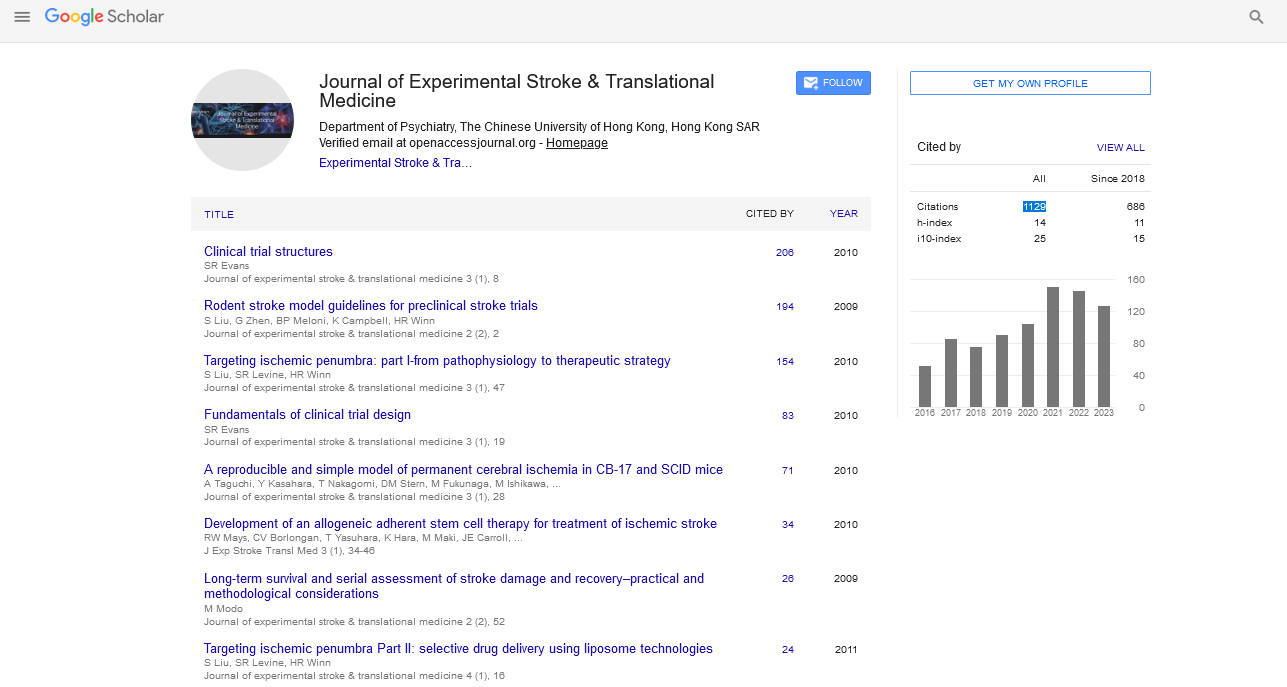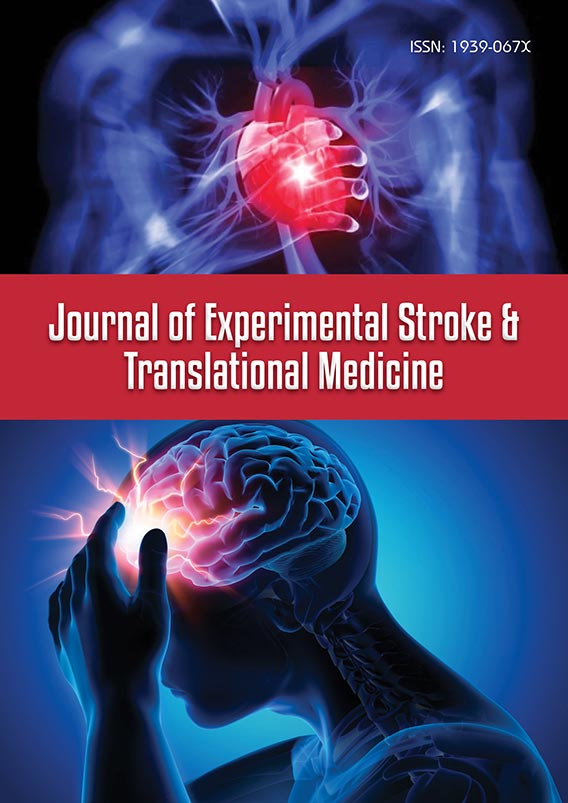Perspective - Journal of Experimental Stroke & Translational Medicine (2024) Volume 16, Issue 6
Cryptogenic Stroke: An Elusive Mystery in Cerebrovascular Medicine
- Corresponding Author:
- Liang Ma
Department of Cardiology, Kasetsart University, Bangkok, Thailand
E-mail: ML1402@zju.edu.cn
Received: 04-Nov-2024, Manuscript No. jestm-24-153509; Editor assigned: 7-Nov-2024, PreQC No. jestm-24-153509 (PQ); Reviewed: 21-Nov-2024, QC No. jestm-24-153509; Revised: 03-Dec-2024, Manuscript No. jestm-24-153509 (R); Published: 31-Dec-2024, DOI: 10.37532/jestm.2024.16(6).281-282
Introduction
Cryptogenic stroke, a term derived from the Greek word kryptos meaning “hidden” and genesis meaning “origin,” refers to a subtype of ischemic stroke with no identifiable cause despite comprehensive diagnostic evaluations. Accounting for approximately 15% to 40% of all ischemic strokes, cryptogenic stroke presents a significant challenge in both diagnosis and management. Unlike other stroke subtypes where risk factors such as atrial fibrillation, atherosclerosis or small vessel disease are clearly implicated, cryptogenic stroke lacks a definitive etiological source, leaving clinicians and patients grappling with uncertainty.
This article explores the epidemiology, potential mechanisms, diagnostic approach and evolving strategies for the prevention and treatment of cryptogenic stroke.
Description
Epidemiology and demographics
Cryptogenic stroke primarily affects younger adults compared to other forms of stroke. Studies show that individuals under 60 years of age are more frequently diagnosed with cryptogenic stroke, although it can occur across all age groups. The incidence rate varies globally, with a higher prevalence reported in populations with limited access to advanced diagnostic tools.
In the United States alone, cryptogenic strokes account for nearly 200,000 cases annually, making it a significant public health concern. While traditional stroke risk factors like hypertension, diabetes and hyperlipidemia are common in these patients, their presence does not fully explain the event, leading to its cryptogenic classification.
Pathophysiological mechanisms
Although the exact cause of cryptogenic stroke remains unknown, several potential mechanisms have been proposed:
Paradoxical embolism and Patent Foramen Ovale (PFO): One of the leading hypotheses is the role of paradoxical embolism through a Patent Foramen Ovale (PFO), a small, persistent opening between the right and left atria of the heart. This anatomical defect can allow venous thrombi to bypass the lungs and enter the systemic circulation, potentially causing a stroke. PFO is present in approximately 25% of the general population but is significantly more common in cryptogenic stroke patients, suggesting a possible association.
Atrial cardiopathy: Emerging evidence highlights atrial cardiopathy, a structural or functional abnormality of the atrium, as a potential contributor to cryptogenic stroke. Subclinical Atrial Fibrillation (AF), which may go undetected in routine monitoring, can lead to embolic events. Advanced cardiac imaging and prolonged cardiac monitoring have been suggested to uncover silent atrial arrhythmias that could otherwise be missed.
Arterial dissection: Spontaneous dissection of cervical arteries, particularly the carotid and vertebral arteries, can lead to cryptogenic stroke. This condition is more prevalent in younger patients and may not always be detectable through standard imaging techniques, thus contributing to its cryptogenic classification.
Coagulation disorders: Undiagnosed thrombophilia or hypercoagulable states can also play a role in cryptogenic stroke.
Conditions such as antiphospholipid syndrome, Factor V Leiden mutation or protein C and S deficiencies are often overlooked in routine evaluations.
Embolic Stroke of Undetermined Source (ESUS): In recent years, the concept of Embolic Stroke of Undetermined Source (ESUS) has been introduced to categorize cryptogenic strokes with embolic characteristics. ESUS is defined by non-lacunar infarcts with no identifiable cardioembolic source, significant large artery stenosis, or other specific cause.
Diagnostic approach
The diagnosis of cryptogenic stroke is typically one of exclusion, requiring a thorough and systematic evaluation. Key diagnostic tools and tests include:
Neuroimaging
Magnetic Resonance Imaging (MRI): Provides detailed visualization of brain tissue and helps differentiate ischemic stroke from other neurological conditions.
Computed Tomography (CT): Often the first imaging modality used in acute stroke evaluation, CT can rule out hemorrhagic stroke.
Cardiac assessment
Echocardiography: Both transthoracic and transesophageal echocardiograms are used to identify PFO, atrial thrombi or other cardiac abnormalities.
Prolonged cardiac monitoring: Devices such as Holter monitors, implantable loop recorders or wearable ECG monitors can detect intermittent or subclinical atrial fibrillation.
Vascular imaging
Carotid duplex ultrasound: Assesses carotid artery stenosis or dissection.
Magnetic Resonance Angiography (MRA) and Computed Tomography Angiography (CTA): Provide detailed images of intracranial and extra cranial arteries.
Blood tests
Coagulation panel: Evaluates for hypercoagulable states or thrombophilia.
Inflammatory markers: Elevated levels of C-Reactive Protein (CRP) and Erythrocyte Sedimentation Rate (ESR) may indicate underlying inflammatory conditions.
Conclusion
Cryptogenic stroke represents a diagnostic and therapeutic challenge in modern medicine. Despite advancements in neuroimaging, cardiac monitoring and genetic testing, the etiology of many cryptogenic strokes remains unknown. A multidisciplinary approach involving neurologists, cardiologists, hematologists and radiologists is essential to uncover hidden causes and optimize patient outcomes. Ongoing research and clinical trials continue to shed light on the complex mechanisms underlying cryptogenic stroke, offering hope for more targeted and effective treatments in the future.

